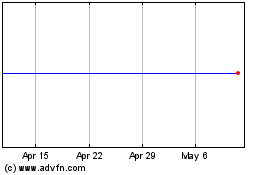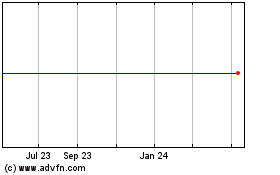US Government: Deepwater Horizon Salvage Work Could Start In September
August 11 2010 - 4:45PM
Dow Jones News
Preliminary work to salvage the sunken Deepwater Horizon rig
from the depths of the Gulf of Mexico could start in early
September, the top federal official overseeing oil-spill recovery
said Wednesday.
"I think sometime in early September in conjunction with the
supervision of the Navy we will take an ROV [remotely operated
vehicle] down there and start doing a comprehensive review," said
Thad Allen, the top federal oil spill response official in a
conference call. "Once we finish our response activities and we are
able to put the equipment in place there will be a survey done at
the rig."
The blowout preventer, the piece of equipment that failed to
stop a natural gas surge that led to the explosion and sinking of
the rig owned by Transocean Ltd. (RIG) and leased by BP PLC (BP,
BP.LN) in late April, won't be removed until the government has
confirmed the well is permanently killed, Allen said. Once the
equipment is brought to the surface it will be preserved by the
Marine Board of Investigation which is probing the causes of the
accident.
The blowout preventer is expected to be a key piece of evidence
in the investigation to find out the cause of the accident that
killed 11 workers and unleashed the largest offshore oil spill in
U.S. history.
Allen said crews are still waiting for weather conditions to
improve in order to continue finishing a relief well being drilled
to intersect the broken Macondo well.
The threat of a tropical depression in the northern part of the
Gulf prompted officials to delay the procedure for a few days.
Tropical Storm warnings have been issued along the Gulf Coast from
Florida across to Louisiana, including New Orleans, though the
National Hurricane Center said this afternoon that the system was
"disorganized" and could dissipate later Wednesday.
BP is expected to intersect the ruptured well sometime early
next week with the nearly 18,000-foot-deep relief well. Engineers
will then proceed with "bottom kill"--which to pump drilling mud
and cement through the relief well to plug and finally seal the
ruptured well.
No oil has leaked into the Gulf from the mile-deep Macondo well
since it was capped on July 15. Even though the broken well was
sealed with cement pumped down through the wellhead last week, the
"bottom kill" is still viewed as the ultimate fix.
The weather is expected to improve Friday and pressure tests
required to start the "bottom kill" could begin over the weekend,
Allen said.
-By Isabel Ordonez, Dow Jones Newswires; 713-547-9207;
isabel.ordonez@dowjones.com
Cooper Cameron (NYSE:CAM)
Historical Stock Chart
From Jun 2024 to Jul 2024

Cooper Cameron (NYSE:CAM)
Historical Stock Chart
From Jul 2023 to Jul 2024
